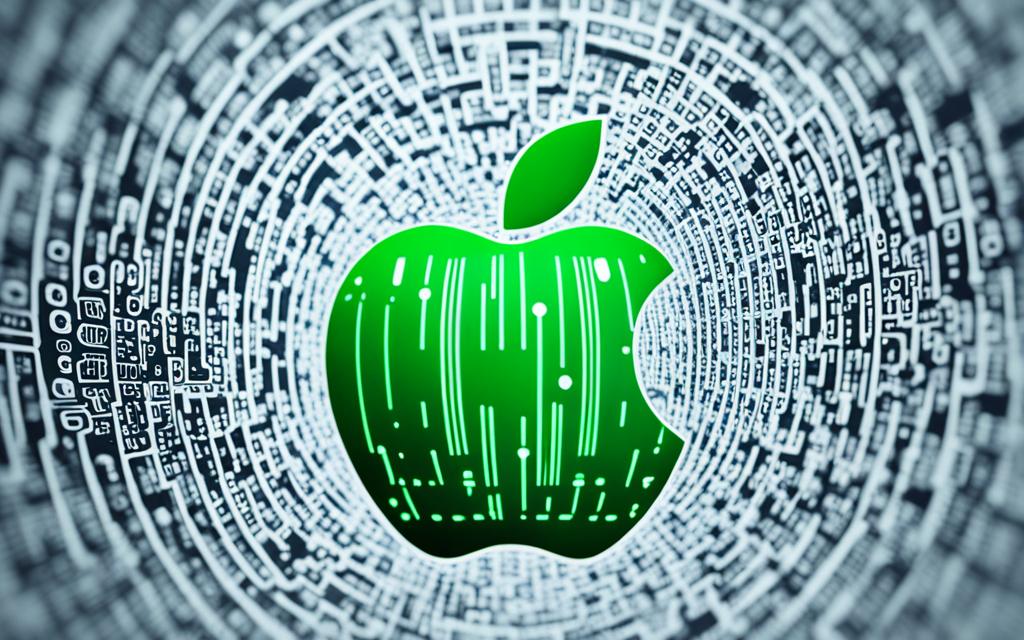Table of Contents
Apple is taking a significant step forward in ensuring the security and privacy of its popular messaging app, iMessage. With the integration of post-quantum cryptography, Apple is bolstering the app’s resistance to potential threats posed by quantum computers.
Quantum computers have the capability to break traditional encryption methods, which can compromise the privacy of sensitive messages. To address this concern, Apple has adopted a groundbreaking post-quantum cryptographic protocol called PQ3.
PQ3 not only future-proofs iMessage from quantum-powered decryption methods but also safeguards the messages sent currently. The protocol is designed to protect against “harvest now, decrypt later” attacks, offering enhanced security measures for users.
By incorporating post-quantum cryptography into iMessage, Apple is demonstrating its commitment to staying ahead of emerging threats and maintaining the privacy of user communications. With PQ3, users can have peace of mind knowing that their conversations are protected against future advancements in quantum computing.
How post-quantum cryptography works
The PQ3 protocol used in Apple’s iMessage offers a high level of security. It is based on the Post Quantum Extended Diffie-Hellman (PQZDH) encryption method, which is known for its ability to self-heal from key compromise. This means that even if a key is compromised, the protocol can create new keys that are not linked to the previous ones, ensuring the ongoing security of the conversation.
PQ3 is designed to combat quantum threats, which arise from the potential power of quantum computers to break traditional encryption methods. While quantum computers capable of cracking modern encryption do not yet exist, it’s important to be proactive in addressing this future threat. By integrating PQ3 into iMessage, Apple is taking a significant step towards securing the privacy of its users.
In beta versions of iOS 17.4, iPadOS 17.4, macOS 14.4, and watchOS 10.4, PQ3 is already in the testing phase. Apple has plans for wider implementation of PQ3 when these operating systems move into full release.
Quantum threats pose a significant challenge to encryption methods, making it crucial to invest in the development of post-quantum cryptographic protocols like PQ3. By adopting this advanced encryption method, Apple is reinforcing iMessage’s security and protecting user data against potential quantum-powered attacks and key compromises.
| Benefits of PQ3 in iMessage | Explanation |
|---|---|
| Self-healing from key compromise | The PQ3 protocol is designed to generate new keys that are not derived from compromised keys, ensuring ongoing security even if a key is compromised. |
| Defense against quantum threats | PQ3 provides robust security against potential quantum-powered decryption methods that could compromise traditional encryption techniques. |
| Future-proofing message security | By proactively implementing post-quantum cryptography, iMessage stays ahead of potential quantum threats, ensuring the long-term security and privacy of user conversations. |
By adopting the PQ3 protocol, Apple’s iMessage not only ensures the current security of its users’ communications but also takes an active stance against future quantum threats. The advanced encryption and self-healing capabilities of PQ3 provide a strong defense against potential attacks and key compromises.
Next, we will explore the significance of post-quantum cryptography in iMessage and how it addresses the need for enhanced security in a digital landscape facing evolving threats.
The importance of post-quantum cryptography
Apple’s adoption of post-quantum cryptography in iMessage is a proactive measure to address the rise of quantum computers and their potential impact on encryption methods. While quantum computers with the capability to break encryption do not yet exist, well-resourced attackers can collect and store encrypted data for future decryption when such machines become available. By transitioning to PQ3, Apple is enhancing the security of iMessage today and protecting against threats that may arise in the future.
The unique advantage of PQ3 lies in its ability to create new keys for each conversation, making it resilient to key compromise and ensuring ongoing message security. Unlike traditional encryption methods, which rely on a single key for multiple conversations, PQ3 generates a fresh key for each interaction. This approach minimizes the risk of data breaches and unauthorized access to message content.
“PQ3 not only provides heightened security for iMessage but also future-proofs the app by preparing it for emerging quantum threats. With the constant advancement of technology, it is crucial to stay one step ahead and safeguard user data from potential vulnerabilities.”
Moreover, PQ3 offers benefits beyond message security. Its implementation in iMessage also enhances data storage practices. By generating new keys for each conversation, PQ3 ensures that even if a key is compromised, only a limited amount of message data is exposed. This compartmentalized approach to encryption strengthens the overall security posture of iMessage, reducing the potential impact of data breaches.
As technology evolves and quantum computers become more powerful, it is essential to future-proof encryption methods. Apple’s adoption of PQ3 in iMessage demonstrates a commitment to staying ahead of the curve and prioritizing user privacy and security. By embracing post-quantum cryptography, Apple is setting a new standard for messaging app security and providing users with the peace of mind they deserve.
PQ3 Benefits
| Benefits of PQ3 in iMessage |
|---|
| Enhanced message security through individualized keys for each conversation |
| Future-proofing against emerging quantum threats |
| Improved data storage practices with compartmentalized encryption |
| Heightened user privacy and protection of sensitive information |
Conclusion
The integration of post-quantum cryptography through the PQ3 protocol in Apple’s iMessage sets a new standard for secure messaging. By proactively addressing future threats posed by quantum computers, Apple demonstrates its unwavering commitment to user privacy and security.
A key advantage of PQ3 is its ability to self-heal from key compromise, providing an additional layer of protection. Even if a key is compromised, PQ3 can generate new keys, ensuring that conversations remain secure.
As Apple continues to roll out PQ3, iMessage becomes future-proofed against emerging threats. This enhanced security offers users peace of mind in their digital communications, knowing that their data is safeguarded. With PQ3, Apple not only emphasizes the importance of privacy but also strengthens its leading position in the industry.
FAQ
What is post-quantum cryptography?
Post-quantum cryptography, also known as post-quantum encryption, is a cryptographic method designed to resist attacks from quantum computers. It uses algorithms that are secure against attacks by both classical and quantum computers.
Why did Apple integrate post-quantum cryptography into iMessage?
Apple integrated post-quantum cryptography into iMessage to enhance the security and privacy of the messaging app. By adopting the PQ3 protocol, iMessage is protected against potential threats posed by quantum computers that have the power to break traditional encryption methods.
What is the PQ3 protocol and how does it work?
The PQ3 protocol, also known as the Post Quantum Extended Diffie-Hellman (PQZDH) encryption method, is the cryptographic protocol used by iMessage to implement post-quantum cryptography. It offers a high level of security by self-healing from key compromise. This means that even if a key is compromised, the protocol can generate new keys that are not linked to the compromised ones, ensuring ongoing message security.
What are the benefits of post-quantum cryptography in iMessage?
The adoption of post-quantum cryptography in iMessage provides several benefits. Firstly, it future-proofs the app against quantum-powered decryption methods, protecting the messages sent currently from “harvest now, decrypt later” attacks. Secondly, the PQ3 protocol creates new keys for each conversation, making it resilient to key compromise. This adds an extra layer of protection, ensuring that even if a key is compromised, the conversation can be secured again.
When will PQ3 be available in Apple’s operating systems?
The PQ3 protocol is currently in the beta versions of iOS 17.4, iPadOS 17.4, macOS 14.4, and watchOS 10.4. It is planned for wider implementation when these operating systems move into full release.







